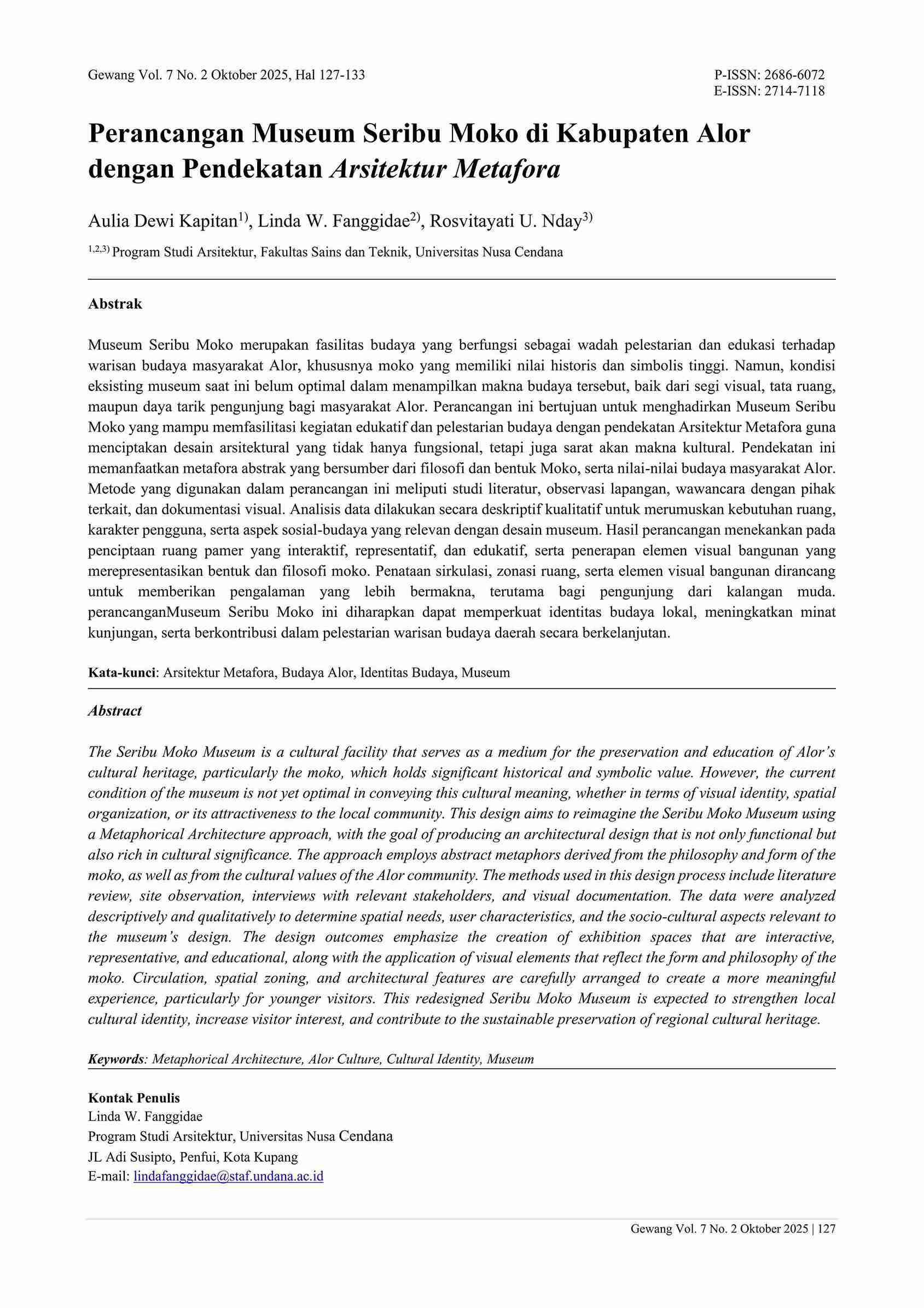Design of the Seribu Moko Museum in Alor Regency Using a Metaphorical Architecture Approach
Main Article Content
Abstract
The Seribu Moko Museum is a cultural facility that serves as a medium for the preservation and education of Alor’s cultural heritage, particularly the moko, which holds significant historical and symbolic value. However, the current condition of the museum is not yet optimal in conveying this cultural meaning, whether in terms of visual identity, spatial organization, or its attractiveness to the local community. This design aims to reimagine the Seribu Moko Museum using a Metaphorical Architecture approach, with the goal of producing an architectural design that is not only functional but also rich in cultural significance. The approach employs abstract metaphors derived from the philosophy and form of the moko, as well as from the cultural values of the Alor community. The methods used in this design process include literature review, site observation, interviews with relevant stakeholders, and visual documentation. The data were analyzed descriptively and qualitatively to determine spatial needs, user characteristics, and the socio-cultural aspects relevant to the museum’s design. The design outcomes emphasize the creation of exhibition spaces that are interactive, representative, and educational, along with the application of visual elements that reflect the form and philosophy of the moko. Circulation, spatial zoning, and architectural features are carefully arranged to create a more meaningful experience, particularly for younger visitors. This redesigned Seribu Moko Museum is expected to strengthen local cultural identity, increase visitor interest, and contribute to the sustainable preservation of regional cultural heritage.
Downloads
Article Details
This license enables reusers to distribute, remix, adapt, and build upon the material in any medium or format, so long as attribution is given to the creator. The license allows for commercial use

